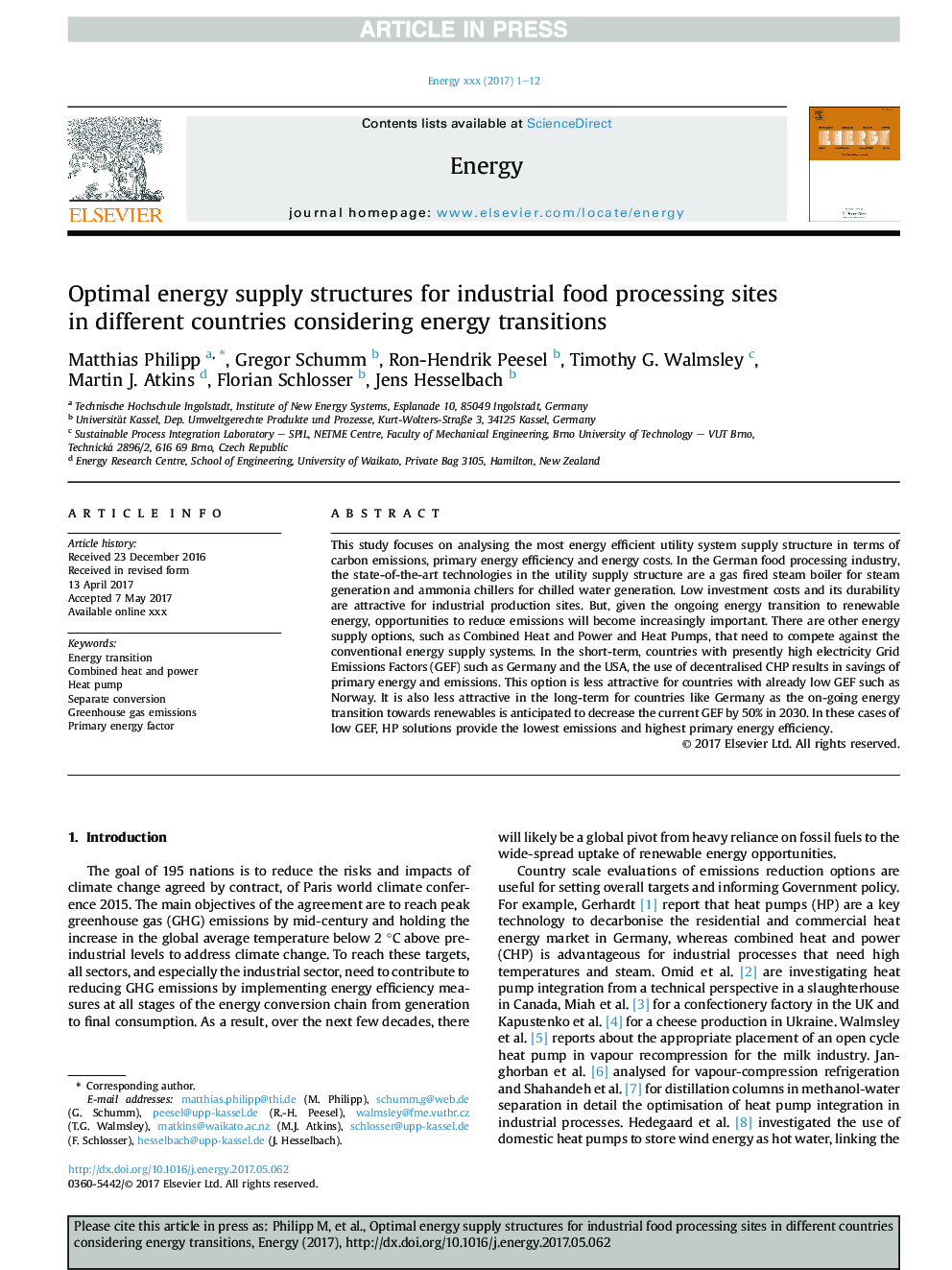| Article ID | Journal | Published Year | Pages | File Type |
|---|---|---|---|---|
| 8072128 | Energy | 2018 | 12 Pages |
Abstract
This study focuses on analysing the most energy efficient utility system supply structure in terms of carbon emissions, primary energy efficiency and energy costs. In the German food processing industry, the state-of-the-art technologies in the utility supply structure are a gas fired steam boiler for steam generation and ammonia chillers for chilled water generation. Low investment costs and its durability are attractive for industrial production sites. But, given the ongoing energy transition to renewable energy, opportunities to reduce emissions will become increasingly important. There are other energy supply options, such as Combined Heat and Power and Heat Pumps, that need to compete against the conventional energy supply systems. In the short-term, countries with presently high electricity Grid Emissions Factors (GEF) such as Germany and the USA, the use of decentralised CHP results in savings of primary energy and emissions. This option is less attractive for countries with already low GEF such as Norway. It is also less attractive in the long-term for countries like Germany as the on-going energy transition towards renewables is anticipated to decrease the current GEF by 50% in 2030. In these cases of low GEF, HP solutions provide the lowest emissions and highest primary energy efficiency.
Keywords
Related Topics
Physical Sciences and Engineering
Energy
Energy (General)
Authors
Matthias Philipp, Gregor Schumm, Ron-Hendrik Peesel, Timothy G. Walmsley, Martin J. Atkins, Florian Schlosser, Jens Hesselbach,
